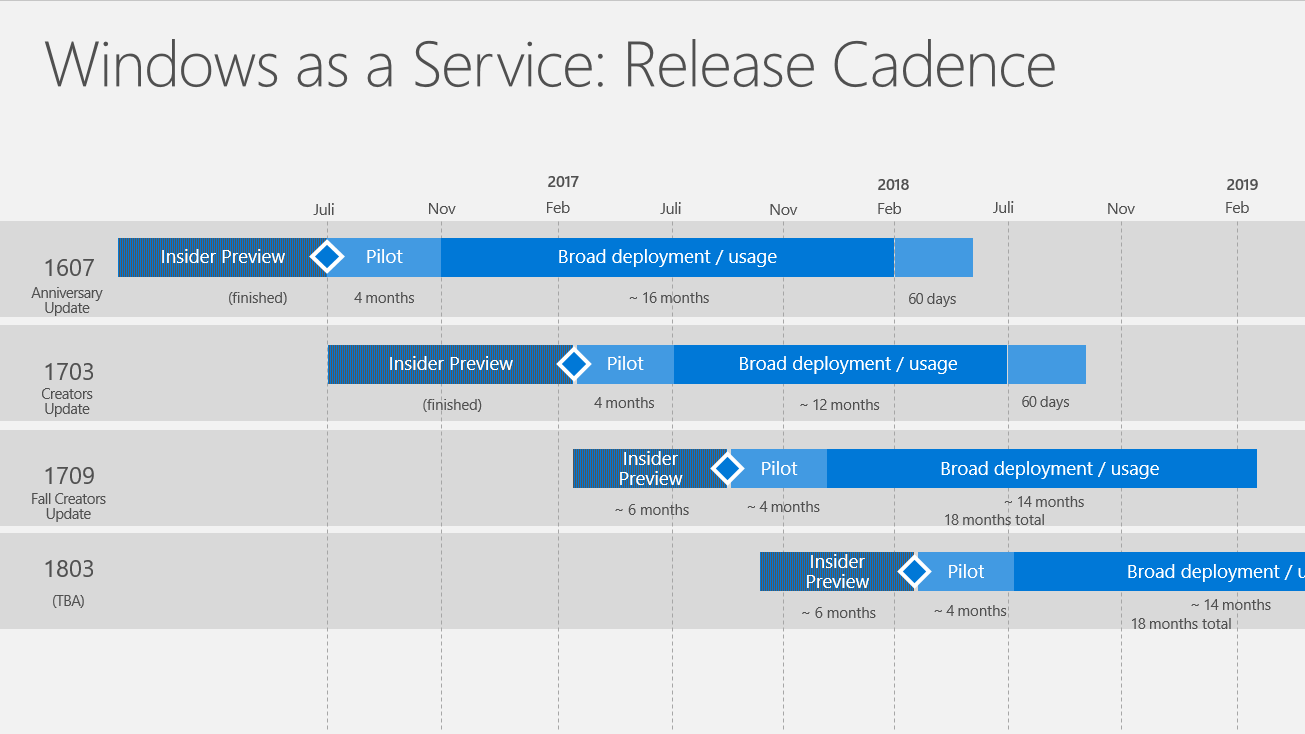Before the release of Windows 10 1709 it was rather complicated, the answer is a minimum of 12 months support, according to Michael Niehaus, Director of Product Marketing for Windows at Microsoft:
For Pro and preceding SKUs, you can specify that you want to defer upgrades, which causes new feature upgrades to not be installed until they have been declared CBB. (For the Home SKU, you can’t do this, so new feature upgrades happen automatically soon after we release them.)
Most people were only reading 12 months and getting scared. But in fact, the support time frame can be much longer:

The minimum 12 months' time frame starts at the time when a release gets declared as CBB. So you always get a minimum 4 months of CB (blue bar) + 12 months of CBB (orange bar) + 60 days grace period (grey bar) after a release goes out of support. So each feature update release will be supported and updated for a total time frame of at least 18 months.
Depending on how many releases are done per year, this time frame could be even longer, because a release will be supported as long as there are no more than two CBB versions at the same time. For example, 1511 released in November 2015 got support until 1703 was declared CBB in August 2017, and with an additional grace period of 60 days, it was supported and updated for 24 months in all. (Version 1511 was declared CBB in March 2016, release 1607 was declared CBB in November 2016. When release 1703 was declared CBB, there would have been three CBB versions in the field and so support for the 1511 CBB was dropped and the grace period started.)
In the unlikely event of three releases a year, the other rule of a minimum 12 months' CBB support will jump in, so in all circumstances, you will always get a minimum of 18 months of total support and update time beginning with GA.